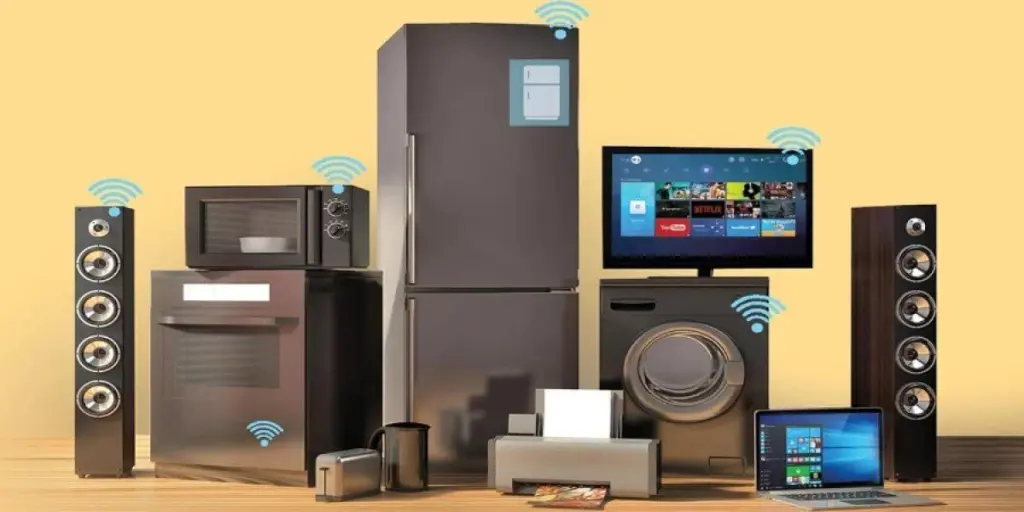The consumer electronics market in the United States is one of the world’s largest and most mature markets. It is driven by high consumer demand for the latest technology and gadgets. Increasing research and technological advancement supports the growth of the market.
The market is characterized by intense competition among leading technology giants such as Apple, Samsung, and Amazon, as well as various start-ups. The industry is expected to grow, driven by technological advancements and the increasing popularity of the Internet of Things (IoT) and 5G networks.
The article will explore the consumer electronics market in the United States.
Table of Contents
Consumer electronics in US: market share and demand
Trends and opportunities in US consumer electronics market
Conclusion
Consumer electronics in US: market share and demand
The US consumer electronics market is currently valued at US $155.1 billion. It is forecasted to grow at a compound annual growth rate (CAGR) of 0.98% in the next five years. The telephony segment is the largest in the US consumer electronics with a value of US $63.26 billion.
The market is the largest consumer of electronics products in the world. Increased demand and consumer base for smartphones, smart drones, tablets, and headsets are the factors pushing the market growth.
Technology advancements in smart homes and smart offices increase demand for consumer electronics such as smart refrigerators, smart air conditioners, and smart TVs. Further, the gaming and entertainment industries have boosted growth in the consumer electronics market.
Key sourcing factors for electronics in the US
Here are essential elements encouraging businesses to source consumer electronics from the United States.
1. Advanced technology
The U.S is a world leader in technology, evident in automation in manufacturing, artificial intelligence, machine learning, and additive printing. Consumer electronics products are technologically advanced, and the advanced technology helps support their manufacturing. The latest consumer electronics gadgets can be produced quicker due to technological support.
2. Presence of global brands
The United States consumer electronics market is dominated by electronics giants such as Panasonic, Samsung, Microsoft, L.G., Toshiba, IBM, Intel, and Apple Inc. The presence of giant companies creates competition fueling innovations in the market. Sourcing consumer electronics from the United States gives businesses access to various electronics products.
3. Strong supply chain systems
The United States has a robust supply chain system for electronics, characterized by a diversified supply base and logistics infrastructure. The US has a large and diverse pool of suppliers, ranging from large multinationals to smaller, specialized firms. This helps companies access the necessary components and materials, even during supply disruptions.
The US has a well-developed transportation and logistics infrastructure, including an extensive network of highways, ports, and airports, making moving goods around and across international borders easy.
4. Strong intellectual property regulations and protections
The United States also has several government agencies that enforce intellectual property laws, including the U.S. Patent and Trademark Office (USPTO) and the U.S. Copyright Office.
Further, federal regulations include the Patent Act, the Copyright Act, and the Trademark Act. Businesses sourcing consumer electronics in the United States will acquire genuine products rather than imitations due to legal protections in the market.
5. Quality products
Many brands, such as Apple, Tesla, Bose, HP, Microsoft, Google, and Amazon, produce high-quality consumer electronics in the United States. These brands have been known for their innovative technology, premium design, and high-quality materials.
Trends and opportunities in US consumer electronics market
1. Smart home devices
Smart home devices such as smart speakers, smart thermostats, smart lighting, and smart security systems have become increasingly popular in the United States. This trend is expected to continue, and there are many opportunities for companies to develop new and innovative smart home devices.
2. Wearable technology
Wearable technology such as smartwatches and fitness trackers have also gained popularity in recent years. As consumers become more health-conscious, there is a growing demand for wearable technology that can monitor and track health-related data.
3. 5G technology
The rollout of 5G technology is expected to create new opportunities in the consumer electronics market. 5G technology will enable faster internet speeds, leading to the development of new products and services that require high-speed connectivity.
4. Virtual and augmented reality
Virtual and augmented reality technologies have been around for a while but are expected to become more mainstream in the coming years. These technologies can be used in various industries, including gaming, education, and healthcare.
5. Sustainable technology
With increasing environmental concerns, there is a growing demand for sustainable technology. This includes energy-efficient products, which use renewable resources and are made from environmentally friendly materials.
Conclusion
The US remains a significant player in the global electronics market, with a strong technology sector and well-developed infrastructure. Businesses should source electronics in the US due to cutting-edge technology, high-quality products, and intellectual property protections.
For the list of available consumer electronics available in the United States, visit Alibaba.com.




